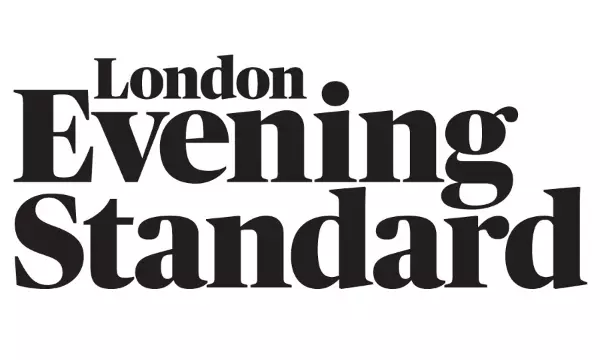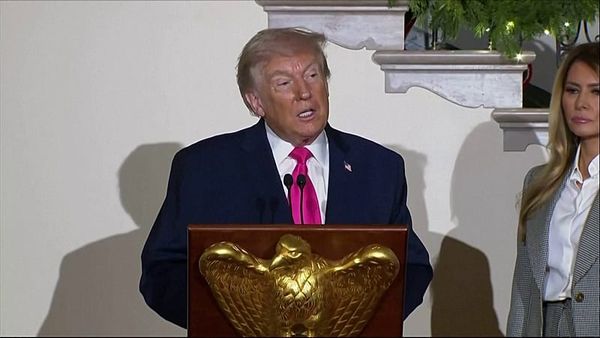
The White House announced layoffs of federal workers on Friday, making good on a threat it had made in response to the US government shutdown, which now appears set to stretch into a third week.
Russell Vought, the director of the White House office of management and budget, wrote on social media that “RIFs have begun”, referring to the government’s reduction-in-force procedure to let employees go.
A document filed with a federal court revealed that hundreds of layoffs took place across the executive branch, including notices sent to employees at the Department of Commerce, the Department of Energy, the Department of Education and several others.
The document shows that about 315 employees at the Department of Commerce, 466 employees at the Department of Education, 187 employees at the Department of Energy, from 1,100 to 1,200 employees at the Department of Health and Human Services, 442 employees at the Department of Housing and Urban Development, 176 employees at the Department of Homeland Security and 1,446 employees at the Department of Treasury received RIF notices.
Union leaders warned the layoffs would have “devastating effects” on services relied upon by millions of Americans, and pledged to challenge the moves in court.
“It is disgraceful that the Trump administration has used the government shutdown as an excuse to illegally fire thousands of workers who provide critical services to communities across the country,” said Everett Kelley, national president of the American Federation of Government Employees (AFGE), which represents 800,000 federal and DC government workers.
Vought had warned that federal agencies could slash jobs if the government shuts down, but the Trump administration largely held off after funding lapsed last week. Asked at a press conference before Vought’s announcement why no layoffs had occurred, the top Senate Republican, John Thune, signaled they would happen soon.
“The White House has now for 10 days laid off doing anything in hopes that enough Senate Democrats would come to their senses and do the right thing and fund the government,” he said.
“My expectation is, yes, they’re going to start making some decisions about how to move money around, which agencies and departments are going to be impacted, which programs are going to be impacted, which employees are going to be impacted. That’s what a shutdown does.”
The AFL-CIO, the largest federation of labor unions in the US, responded to Vought’s post on Friday, saying: “America’s unions will see you in court.”
Last week, the AFGE and the American Federation of State, County and Municipal Employees (AFSCME) filed for a temporary restraining order to block the Trump administration from carrying out any reductions in force (RIFs) during the shutdown. The unions filed an emergency motion for a temporary restraining order on Friday, following Vought’s post.
Lee Saunders, president of the AFSCME, said: “These mass firings are illegal and will have devastating effects on the services millions of Americans rely on every day. Whether it’s food inspectors, public safety workers, or the countless other public service workers who keep America running, federal employees should not be bargaining chips in this administration’s political games.
“By illegally firing these workers, the administration isn’t just targeting federal employees, it’s hurting their families and the communities they serve every day. We will pursue every available legal avenue to stop this administration’s unlawful attacks on public service workers’ freedoms and jobs.”
Congressional Democrats have refused to vote for a Republican-backed bill to restore funding unless it includes an array of healthcare-centered concessions. After holding seven unsuccessful votes on the parties’ spending bills, the Senate’s Republican leaders have put the chamber in recess until next Tuesday, meaning the standoff is unlikely to be resolved before then.
The layoffs came on the same day government employees received only a partial paycheck covering the final days of September but not the beginning of October, since appropriations lapsed at the start of the month.
At a Friday-morning press conference, the Republican House speaker, Mike Johnson, blasted Senate Democrats for not supporting the GOP’s bill, which passed his chamber on a near party-line vote.If the government is not reopened by next Wednesday, US military personnel are set to miss a paycheck.
“This is the last paycheck that 700,000 federal workers will see until Washington Democrats decide to do their job and reopen the government,” Johnson said.
“Starting next week, American service members, many of whom live paycheck to paycheck, are going to miss a full paycheck. If Democrats don’t end this shutdown by Monday, then that October 15 date will pass us by.”
Johnson has kept the House out of session throughout the shutdown in an effort to pressure Senate Democrats into supporting the Republican funding proposal. Earlier this week, a group of House Democrats sent the speaker a letter asking him to allow a vote on legislation that would ensure US troops get paid during a shutdown, but Johnson has refused to bring lawmakers back to Washington.
The Senate has become a chokepoint in the funding battle because any legislation needs at least 60 votes to advance in the chamber. In exchange for their support, Democratic senators are demanding that premium tax credits for Affordable Care Act health plans be extended beyond their end-of-the-year expiration date.
They are also seeking safeguards against Donald Trump’s rescissions of congressionally approved funding, a restoration of money for public media outlets and an undoing of cuts to the Medicaid healthcare program for poor and disabled Americans.
Max Stier, the president and CEO of the non-profit Partnership for Public Service, condemned the gridlock’s impact on government workers.
“It is wrong to make federal employees suffer because our leaders in Congress and the White House have failed to keep our government open and operational,” Stier said.
“Our air traffic controllers, VA nurses, smoke jumpers and food inspectors are not responsible for this government shutdown, and they shouldn’t bear the financial burden created by the failures of our elected officials. The irony is that members of Congress and senior White House leaders are continuing to be paid.”
Earlier this week, on 7 October, a federal judge ordered the Trump administration to provide specifics on the status of any layoff plans, the affected agencies and whether any federal employees had been recalled to work to carry out layoffs, by Friday, 10 October.
A report by the Center for American Progress on 30 September argued that a government shutdown limits the ability of the Trump administration to carry out firings, citing guidance from the office of management and budget that admitted any permanent layoffs need to have been initiated before the shutdown began.
“Constraints on permanently firing federal employees during a shutdown largely exist because of the Antideficiency Act and the distinction between ‘shutdown furloughs’ that happen during a lapse in congressional appropriations and ‘administrative furloughs’, which are department and agency procedures on how to permanently let staff go, including – for example – through a RIF,” the report, authored by Greta Bedekovics, associate director of democracy policy at the Center for American Progress, states. “The Trump administration’s threats to layoff federal employees should be understood as a goal of the administration that will be pursued with or without a government shutdown and should not drive lawmakers’ decisions on whether to support government funding bills.”
Shrai Popat contributed additional reporting







